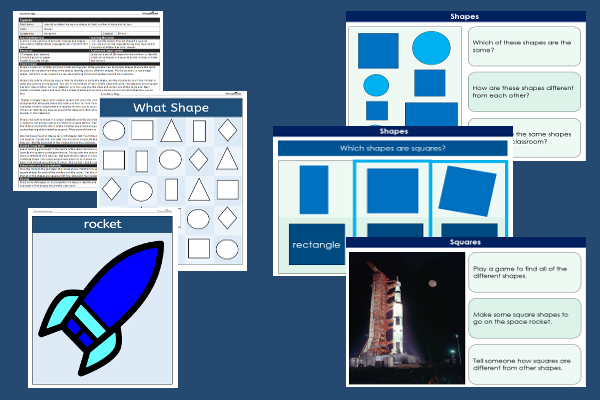Lesson One – Squares

This numeracy teaching pack for the Foundation Stage gets the children to identify and describe which shapes are squares by their matching number of sides and corners for their common properties.
The class can play games and make a selection of models to identify and record how a range of different shapes can be classed as squares and how they are different from other shapes.
Download this teaching pack including a lesson plan, classroom activities and an interactive presentation to teach the children to identify and describe which shapes are squares by their matching number of sides and corners for their common properties
Activities in this teaching pack include a worksheet to play a game to identify and describe different 2D shapes by their matching properties including numbers of sides and corners and a template to use mouldable materials to make model squares which can be used to complete a rocket shape.
The interactive presentation gets the children to explore how to identify and describe square shapes by their matching number of sides and corners.
This lesson is part of a numeracy scheme of work to get the children to identify, describe and compare different 2D shapes by their individual shape properties including numbers of sides and corners. There are teaching activities for shared learning, differentiated worksheets to support independent learning and interactive presentations to introduce concepts and key skills.
-

School Friends
Investigate, describe and model some of the special ways of providing practical, spiritual and emotional support to other pupils in the school
-

School Pictograms
Explore how to count and record the numbers of different pieces of school equipment that can be found in trays stored around the classroom
-

Listening Skills
Develop and refine listening skills when practising how to follow commands and instructions when playing games and role-playing actions
-

Halving Things
Explain and model how to find and record the halves of some of the different objects that can be used at home and in school
